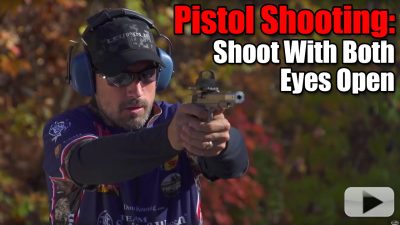Types of Pistols: Top Things You Need to Know About Before You Buy
It seems simple doesn’t it? You have made the decision to buy your first handgun and you start shopping. This shouldn’t take long after all, it’s not complicated…right? As you browse online however something begins to become apparent. There is a great deal more that goes into shopping for a handgun than most people realize. The first and most obvious thing is just what type of handgun do you prefer? A single action revolver, single action semi-automatic pistol or maybe a single/double action gun? Yes, my friends…there is much more to picking a handgun than color. Fear not because I will take a few minutes to help you work your way through the labyrinth that is gun types. With this knowledge you can better understand just what you are looking at and pick the absolute best gun for you.

Related Articles: 12 Remarkable Pistols from the Colt Custom Shop
Five Categories
First up let’s break guns into their general five bite-sized categories. While this is approaching the gun nerd level of information, you will look like a rock star when you can speak about these details. Right now, there are five different classifications of handguns. While some may share certain characteristics such as caliber, they are none the less considered different. These five classifications are: single shot pistols, multi-barreled pistols, revolvers, semi-automatic pistols, and automatic pistols. Let’s take a closer look at each category.
Single Shot Pistols
These guns are pretty self-explanatory. The gun is designed to fire one single round at a time. The gun is then manually reloaded and then can be fired again. The most common gun in this category is the small derringer pistols. There are also hunting handguns that fit this category as well. While they can perform well with the single round they produce, they are slow to reload and not designed for long term use.
Multi-Barreled Pistols
Once again the name is self-explanatory. These guns are a small improvement on the single shot pistols because they enable the shooter to fire more than one shot without having to reload. Many of these guns are archaic but modern versions exist such as Arsenal Firearm’s AF2011-A1 double barrel pistol. There are derringer pistols that also fit this category should this be of interest to you.
Revolvers
Revolvers are easily recognized and, in many cases, are called “wheel guns.” They are built around a rotating cartridge-filled cylinder. These cylinders can contain anywhere from five to eight rounds depending on the gun. Each time the shooter presses the trigger, the cylinder rotates, and a new round is put into action. These guns were created in the early 19th century and were a game changer because they allowed the shooter to fire multiple rounds before reloading. These guns can range from super small to almost comically huge. There are several types of revolvers which we will look at later.
Related Articles: How to Evaluate Antique Rifles When Buying Online
Semi-Automatic Hand Guns
In the modern day we now have semi-automatic hand guns. These are the most commonly seen guns in the firearms industry and the standard for law enforcement, military and civilians alike. A semi-auto gun uses the energy of the fired round to automatically reload the chamber for the next shot. Most use recoil energy to reload the next shot but a few can use gas from the fired round to cycle the gun. These are magazine fed and allow the shooter to carry a large number of rounds as well as extra magazines for the gun. Handguns such as the venerable 1911 and the Glock are common examples of semi-auto guns.
Automatic Hand Guns
The last category we will look at is more of a technicality. Automatic handguns are fully automatic weapons capable of rapid and consecutive fire with one simple depression of the trigger. These are by no means common and are very heavily regulated by the ATF. While they serve little purpose in the self-defense realm, they are incredibly enjoyable to shoot. One of the most well known in this category is the Glock 18. It is a super-fast shooting handgun that has made more people giggle than Saturday morning cartoons.
Actions
Now that we have our selections broken down into five large categories, we can drill down even a bit deeper. Many times, new gun shoppers will be faced with the question, “what type of action” do you want? While this may seem like a question teetering on quantum physics, it is actually pretty simple. The “action” of a handgun describes what happens when you press the trigger. As a general rule the types of actions can be categorized as the following:
Single Action Revolver
This is the traditional cowboy gun style trigger. In order for the gun to fire the hammer must be cocked to the rear first. Pressing the trigger releases the hammer and fires the gun. While it is an older design, there are several hunting handguns that still use this action.
Double Action Revolver
This is a more modern and traditional system. In this action, the trigger both draws the hammer to the rear as well as releases it. A vast majority of modern revolvers fall into this category. In many cases these guns are carried as primary defensive pistols or even back up guns. They are simple to run and generally small in size. Many people believe they are simpler internally. However, the average revolver has more parts than the average automatic, some twice as many.
Related Articles: Semi-Auto Pistols: Barrel Size, Frame Size, Materials and More
Single Action Semi-Auto
On this style of handgun, the trigger simply releases the hammer. The hammer must be cocked to the rear first before the gun will fire. This can be accomplished by racking the slide to the rear or letting the cycle of the gun reset the hammer back. This is the action associated with the famous 1911 pistol.
Double Action/Single Action (DA/SA)
With these pistols the initial trigger pull draws the hammer to the rear as well as causes the hammer to fall forward firing the round. These pistols have two distinct trigger “pulls.” The initial pull is significantly heavier than the following pull because it is drawing the hammer back. Once fired, the recoil of the slide cycles the action and allows the trigger to be used simply to release the hammer. This can be seen in pistols such as the Beretta 92 used by the US Military.
Striker Fire/Safe Action
These pistols are unique in their function because they do not have an external hammer. While there is great debate whether these guns are SA/DA or DA only we generally classify them in their own category. The loading and or cycling of the slide “cocks” the weapon initially. The trigger then releases the mechanism and the striker moves forward onto the round. The following cycling of the slide then resets the action to run again. This system was brought to prominence by Glock and is now seen in a huge number of other handguns. These guns are free of any external safeties and have no standard hammer.
Double Action Only Revolvers
These weapons have been around a long time yet are a fairly new addition to the defensive pistol market. These are characterized by the hammer being covered by a metallic shroud. This is supposed to avoid any snagging on clothes. With this design the hammer cannot be manually cocked making it DA only. The gun is fired by simply pressing the trigger. These guns are generally marketed as super lightweight, easy to conceal handguns. In many cases they are marketed to women as an easy to carry gun.
Related Articles: 12 Outstanding Guns From the Remington Custom Shop Guns
DA Only Semi-Auto
There are a few semi-auto pistols available in which the trigger can only be used in a double action way. The trigger both cocks the trigger and releases it. This can be seen on the Ruger P89 and related series of weapons. While it may be harsh, these are sometimes considered to be the manual transmission of the handgun world. While they do indeed function, they have been replaced in the market by simpler weapons.
GunBroker.com Product Spotlight Videos
What’s it For?
The next thing we need to discuss is just how the handgun is going to be used. I will say right off the line that no one handgun can do everything. While most can serve many roles, you should not try to generalize too much. The most common purpose of most handgun purchases is for self-defense. This comes in two different flavors usually with guns for home defense and guns for every day concealed carry. While this is a category in which guns can serve a dual purpose, I encourage you to keep them separate. So you can now tell your significant other, that you do indeed need two guns. A gun for home defense can be set up quite differently than your concealed carry blaster. More specifically a home defense gun can include a few items that a lighter weight every day carry usually does not. The first item is a weapon mounted light. The chances are very good that a home invasion or burglary is going to happen at night. Statistics support this and common sense makes it even truer. Johnny Dirtbag is generally not interested in a conflict with a home owner. They will use the cover of night to get in and try to do what they want. With that being said we need to remember that we must be able to identify our threat before we start putting rounds on them. The news is replete with “accidental” shootings where a homeowner heard a disturbance, broke out their handgun and ended up shooting a family member coming home late or some other like situation. We must be able to see what we are about to shoot and make sure we need to shoot it.
Another item seen on home defense handguns are lasers. In my opinion lasers have a pretty narrow band of real application, but in the home, they are exceptional. Unless you live in a 75,000 square foot mansion, chances are that any shot you will have to take will be inside 20 to 30 feet max. A laser helps me get my gun on target quickly, so I can engage the threat. This is critical because of the small space in which you must work. You will not have time to get a perfect stance, perfect sight picture and long smooth press of the trigger. Lasers are fast and help get you into the fight quickly.
The last thing I encourage on home guns are low light sights. These serve a very interesting dual purpose. First and most importantly they allow you to see and align your sights. A second benefit for these sights falls into the “they were not made for that…but it’s a great byproduct” category. Night or low light sights are filled with tritium which glows at night. If you have ever looked down at your sights in the dark you can easily see them glowing. This translates to easily seeing where your gun is at night. As I said, it is a fortunate byproduct.
Related Video: Original Series: New Guns & Gear Releases: GunBroker.com Product Spotlight
If the gun is for concealed carry we need to consider a few different things. First and foremost is our ability to effectively conceal the gun. While a giant Desert Eagle in a shoulder rig has cool written all over it, it is less than optimal when it needs to be hidden from sight. So the cliché that size matters is absolutely true in this setting. As a rule there are four sizes of handgun. Full-size pistols are the ones we see most often. They generally are five inches or more in height with a four inch or longer barrel. Overall these guns sit in the seven+ inch size range. These guns are easy to shoot and offer great magazine capacity. With a small mag extension some of these guns approach the 20-round mark. While they bring quite a bit to the table in ease of shooting, accuracy and magazine capacity they can be difficult to carry. While larger framed folks such as me can carry a full-size Glock 17, it is simply too much for many people to manage.
The next option is compact pistols. These come in slightly smaller than their full-sized cousins with a three to four-inch barrel. They are smaller in height as well with most in the sub-four-inch range. While not enjoying the large magazine capacity of full size guns, they still bring quite a bit to the mix. These guns are also easy to shoot and are considered by some to be the perfect balance of firepower and size. In the right clothes and holster these guns are very easy to conceal and carry on a daily basis. By far, these are the most popular handguns in the concealed carry market and include guns such as the Glock 19.
Hit “shrink” again on the gun size chart and we move into the sub-compact pistols. These are guns dedicated to concealed carry. Generally, barrel length is three inches or less, overall length is closer to six inches and overall height is usually less than five inches. One of the most common in this arena is the Glock 26 also known as the “baby Glock.” While these guns are much easier to conceal, we will start to see challenges in magazine capacity as well as ease of shooting.
Pocket or micro-pistols are the smallest category of pistols for concealed carry. These guns are designed to be carried anywhere including in a pocket. They also tend to be chambered in less powerful rounds such as .380 auto and .25 auto. In many cases these guns are carried as backup to a regular concealed carry gun. They can be a bit of a chore to shoot because of recoil, trigger challenges and short sight radius. There are some guns that have struck a good balance between recoil and size. The new 365 from Sig and the Springfield Armory 911 work well as guns in this size.
One last thing to consider when deciding on your purchase is weight. A full-size gun can get heavy when carried all day, every day. Some full size handguns can weigh over two pounds. This may not sound like much, but you will feel it at the end of the day. Make sure you will not regret your purchase and end up just keeping it in the safe. We need to find a balance between “enough gun” and “too much” gun. If at all possible, try before you buy. This can be through a friend or even a range that offers handgun rentals.
Related Articles: 10 Collectible Revolvers from Colt Custom Gun Shop | A Must-See
The last thing we will talk about in detail regarding things to know about guns is caliber. The term itself can be confusing to the new owner because few people know to what it is in reference. In short, caliber is a method of measuring the size of a round. For example, a .45 round measures .45 of an inch. The same goes for .38 being .38 of an inch and .22 being .22 of an inch. The 9mm is simply a metric version where the round is 9mm in diameter or .35 of an inch. The biggest reason we will discuss caliber is recoil. The cliché of “I carry a 45 because they don’t make a 46” sounds clever, but it makes us think we must go big to be effective. It is quite the contrary. Recently the FBI has transitioned back to the 9mm round because they found through extensive research that the 9mm performed on par with even the larger .40 S&W and the .45 ACP. I will save you the physics and physiology lecture, but suffice it to say that modern 9mm ammunition can get the job done. This is especially important should you choose to go with a very small pocket style pistol. The smaller the gun, the less mass it will have. This in turn affects its ability to manage recoil. The recoil and shock of the gun not absorbed by the frame is transferred to the shooter. This can make for a less than enjoyable shooting session. The long term effect of that is less practice because you don’t enjoy it. If this is your primary defensive pistol, then that can have lethal consequences. I encourage you to find a gun in a good defensive caliber that can be carried well. Micro guns have become popular because they are very comfortable to carry. We must remember though, that the gun we carry is designed to be comforting, not comfortable. Granted, it shouldn’t be a painful labor to carry your gun. We need to find the right sized gun, in the right caliber and in the right holster.
Knowledge is undoubtedly power. The more we know about handguns, the better equipped we are to make an educated decision about what we want. You can also share this knowledge with loved ones and friends when the time comes for them to start shopping for a handgun. While it can be quite a bit to digest, you will be better prepared to get exactly what you want and need.
Related Articles: Top 10 Budget Handguns For Under $400 [2023 Edition]
Related Articles: Bargain Guns: Best Shotgun for the Money
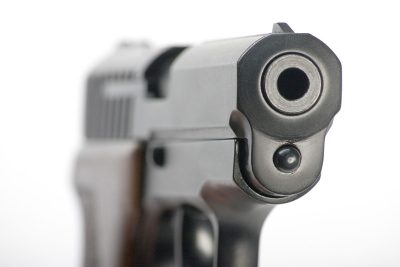

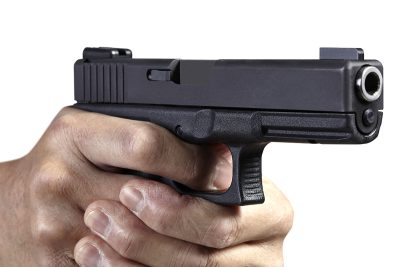
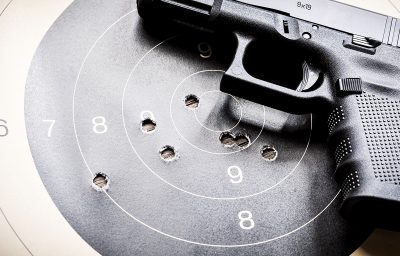


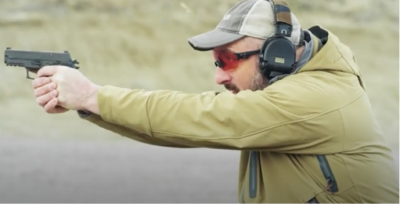
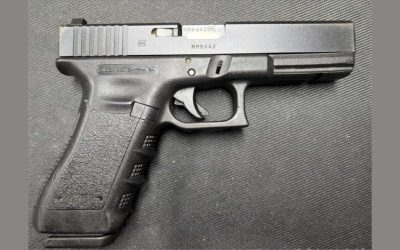
![Gun Review: Remington 700 XCR Rifle [Video]](https://content.gunbroker.com/wp-content/uploads/2020/02/7ch4EUa1-1280-400x225.jpg)
